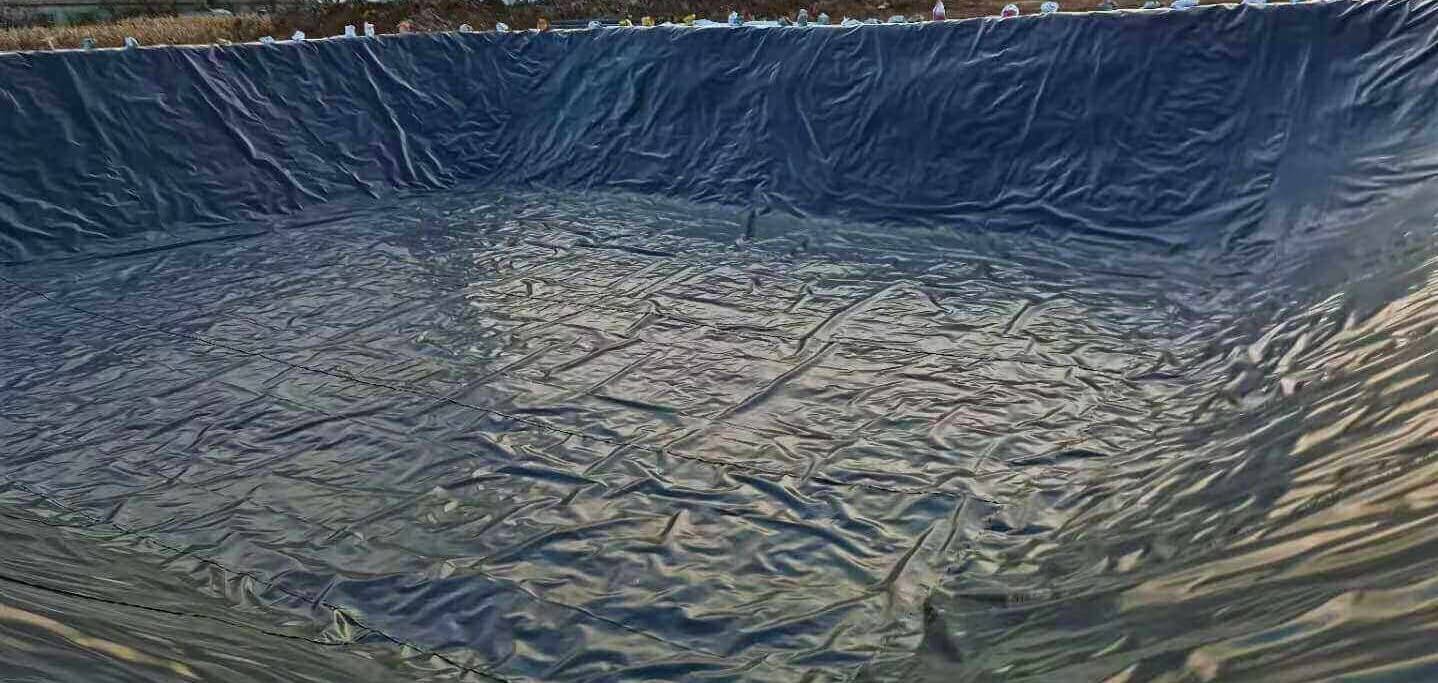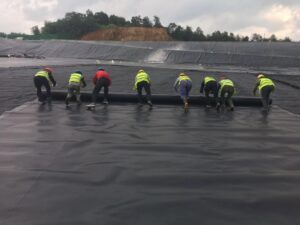What is the service life of hdpe geomembrane?
The service life of a high-density polyethylene (HDPE) geomembrane can vary based on several factors, including environmental conditions, installation quality, and the specific application. HDPE geomembranes are commonly used in various environmental and civil engineering applications, such as landfill liners, pond liners, and containment systems.
Generally, HDPE geomembranes are known for their durability and resistance to chemical and environmental degradation. They can have a service life ranging from 20 to 30 years or more, depending on the conditions they are exposed to. Factors that can affect the service life of HDPE geomembranes include exposure to ultraviolet (UV) radiation, temperature fluctuations, chemical exposure, mechanical stress, and installation techniques.
Proper installation, regular inspections, and appropriate maintenance can help extend the service life of HDPE geomembranes. It’s essential to follow industry guidelines and recommendations for installation and to consider factors such as slope, anchoring, and stress distribution during the design and construction process. Additionally, manufacturers often provide specific information about the expected service life of their HDPE geomembrane products, and it’s advisable to consult these specifications for accurate and application-specific details.
What are the usage scenarios of hdpe geomembrane?
High-density polyethylene (HDPE) geomembranes find applications in various scenarios where impermeable barriers are required for containment, environmental protection, or construction purposes. Some common usage scenarios include:
Landfill Liners: HDPE geomembranes are widely used as liners in landfill sites to prevent the leachate (liquid that percolates through waste) from contaminating the surrounding soil and groundwater.
Pond Liners: HDPE geomembranes are used in the construction of ponds, reservoirs, and other water containment systems. They help to prevent water seepage and provide an impermeable barrier.
Mining Applications: In mining operations, HDPE geomembranes are used to line tailings ponds, heap leach pads, and other containment areas to prevent the release of potentially harmful substances into the environment.
Waste Containment: They are used in various waste containment applications, including hazardous waste storage facilities, industrial waste lagoons, and containment structures for liquid and solid wastes.
Water Storage Tanks: HDPE geomembranes can be used to line water storage tanks, ensuring a watertight seal and preventing the loss of water through seepage.
Canal and Irrigation Systems: In irrigation and canal systems, HDPE geomembranes are employed to prevent water seepage and enhance water retention, improving overall water efficiency.
Stormwater Management: HDPE geomembranes are used in stormwater management systems to create impermeable barriers, preventing pollutants from leaching into the soil or water bodies.
Aquaculture: HDPE geomembranes are used in the construction of fish and shrimp ponds, providing a waterproof lining to retain water and prevent contamination.
Tunnels and Underground Structures: In tunnel construction and other underground structures, HDPE geomembranes can be used to prevent water infiltration and protect against soil erosion.
Secondary Containment: HDPE geomembranes are utilized for secondary containment in facilities handling chemicals or hazardous materials, helping to prevent spills and leaks from reaching the surrounding environment.
These usage scenarios highlight the versatility and effectiveness of HDPE geomembranes in creating impermeable barriers for various applications, contributing to environmental protection, containment, and efficient water management. The specific requirements for each application may vary, and proper installation and maintenance are crucial for ensuring the long-term performance of HDPE geomembranes in these scenarios.

What is the installation process of hdpe geomembrane?
The installation process of high-density polyethylene (HDPE) geomembrane involves several key steps to ensure proper performance and longevity. Here is a general guide to the installation process:
Site Preparation:
Clear the site of any debris, sharp objects, or uneven surfaces.
Grade and compact the subgrade to create a smooth and stable foundation.
Address any potential issues such as soft spots or areas with poor soil quality.
Geotextile Placement (Optional):
In some applications, a geotextile underlayment may be placed over the prepared subgrade to provide additional protection against punctures and to enhance the stability of the geomembrane.
Panel Layout:
Unroll and lay out the HDPE geomembrane panels on the prepared subgrade.
Align the panels according to the project design, leaving sufficient overlap for seaming.
Seaming:
HDPE geomembrane panels are seamed together using heat fusion techniques. This is typically done with specialized equipment that welds the geomembrane sheets together.
The two common methods of seaming are hot wedge welding and extrusion welding.
Ensure that seaming is done under suitable weather conditions, as wind, rain, or extreme temperatures can affect the quality of the seams.
Testing Seams:
Conduct quality control tests on the seams to ensure they meet specified standards. This may involve visual inspections, destructive testing, or non-destructive testing methods.
Anchor and Terminate:
Anchor the geomembrane along the edges using appropriate anchoring methods, such as anchor trenches, anchor trenches filled with soil, or anchor strips.
Terminate the geomembrane properly, securing it against slippage or movement.
Field Seaming and Repairs:
If additional panels are required, field seaming may be necessary. Follow the same procedures for seaming and testing as described earlier.
Address any damages or defects promptly through proper repair methods, such as heat welding or patching.
Cover or Backfill:
Depending on the application, HDPE geomembrane may be covered with protective layers or backfilled with soil or other materials.
Exercise caution during cover or backfill operations to avoid damaging the geomembrane.
Quality Assurance:
Perform final inspections and quality assurance checks to ensure that the installation meets the project specifications and industry standards.
It’s crucial to follow the manufacturer’s guidelines, industry standards, and project specifications during each step of the installation process. Additionally, consider consulting with experienced professionals or geomembrane installation experts to ensure a successful and durable installation.
Author
-

Founded in 2002, Tinhy's team focuses on the manufacturing, marketing, installation, application and research and development of geosynthetic materials.
View all posts





